
Ceuta is a Spanish autonomous city on the north coast of Africa.

Melilla is a Spanish autonomous city located on the northwest coast of Africa, sharing a border with Morocco. It has an area of 12.3 km2 (4.7 sq mi). Melilla is one of two permanently inhabited Spanish cities in mainland Africa, the other being nearby Ceuta. It was part of the Province of Málaga until 14 March 1995, when the city's Statute of Autonomy was passed.

An alfajor or alajú is a traditional confection found in Andorra, Argentina, Bolivia, Chile, Colombia, Ecuador, Paraguay, Peru, the Philippines, Southern Brazil, Southern France, Spain, Uruguay, and Venezuela. The archetypal alfajor entered Iberia during the period of al-Andalus. It is produced in the form of a small cylinder and is sold either individually or in boxes containing several pieces.

Medina Sidonia is a city and municipality in the province of Cádiz in the autonomous community of Andalusia, southern Spain. It is considered by some to be the oldest city in Europe, used as a military defense location due to its elevated location. Locals are known as Asidonenses. The city's name comes from Medina and Sidonia, meaning "City of Sidon".

Alonso Pérez de Guzmán y de Zúñiga-Sotomayor, 7th Duke of Medina Sidonia, was a Spanish aristocrat who was most noted for his role as commander of the Spanish Armada that was to attack the south of England in 1588.
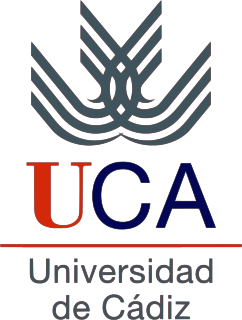
The University of Cádiz, commonly referred to as UCA, is a public university located in the province of Cádiz, Andalusia, Spain, noted for its medicine and marine sciences curricula. It was founded in 1979, and has the Latin motto Non Plus Ultra. Its headquarters are located in Cádiz, where the Rectorate is. During the 2007/2008 academic year, there were 17,280 students, 1698 lecturers, and 680 administration and services workers associated with the university.

Luisa Isabel Alvarez de Toledo y Maura, 21st Duchess of Medina Sidonia, GE was the holder of the Dukedom of Medina Sidonia in Spain. She was nicknamed La Duquesa Roja or The Red Duchess due to her lifelong left-wing, anti-Francoist, pro-democracy political activism.
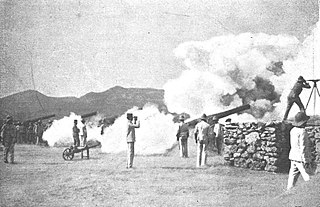
The Second Melillan campaign was a conflict in 1909 in Morocco around Melilla. The fighting involved local Riffians and the Spanish Army.

The coat of arms of Melilla is that of the Ducal House of Medina Sidonia, whose titular funded the military operation that seized Melilla in 1497.

The Andalusian independentist conspiracy in 1641 was an alleged conspiracy of Andalusian nobility for Andalusia to secede from Spain. The conspiracy was brought to an end in summer 1641 after the plans of rebellion were discovered.
The Conquest of Melilla occurred in September 1497, when a fleet sent by the Duke of Medina Sidonia seized the north African city of Melilla.
The 2012–13 Copa del Rey was the 111th staging of the Copa del Rey. The competition began on 29 August 2012 and ended on 17 May 2013 with the final, held at the Santiago Bernabéu in Madrid, in which Atlético Madrid lifted the trophy for the tenth time in their history with a 1–2 victory over hosts Real Madrid in extra time. Barcelona were the defending champions but were eliminated by Real Madrid in the semifinals. Going into the competition, the winners were assured of a place in the group stage of the 2013–14 UEFA Europa League, but both finalists had already qualified for the 2013–14 UEFA Champions League a few weeks before.

The Señorío de Sanlúcar or Lordship of Sanlúcar was an independent Christian lordship in the Kingdom of Castile located in and around the modern day city of Sanlúcar de Barrameda. It was taken from the Kingdom of Granada in 1295.
The Cancionero de la Colombina or Cancionero Musical de la Colombina (CMC) is a Spanish manuscript containing Renaissance music from the second half of the 15th century.

The Morocco–Spain border consists of three non-contiguous lines totalling 18.5 km around the Spanish territories of Ceuta (8 km), Peñón de Vélez de la Gomera and Melilla (10.5 km). These three exclaves form part of Spain's plazas de soberanía, which also includes a number of small islands off the Moroccan coast.
Luis Lanchero, also known as Luis Lancheros was a Spanish conquistador and the founder of the town of Muzo, Boyacá, the most important emerald settlement in Colombia. Muzo was founded after twenty years of unsuccessful attempts to subjugate the Muzo to Spanish rule. Lanchero arrived in the New World in 1533 and died impoverished in Tunja in 1562.
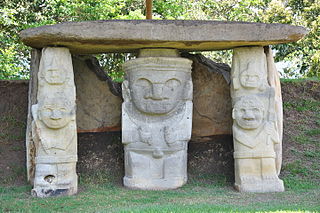
Juan Friede Alter was a Ukrainian-Colombian historian of Jewish descent who is recognised as one of the most important writers about Colombian history, the Spanish conquests and a proponent of indigenism; the defence of the rights and descriptions of the oppression of indigenous people.
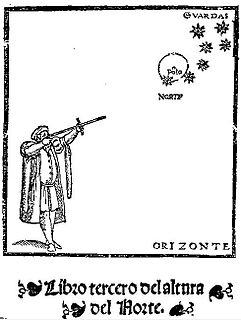
Pedro de Medina was a Spanish cartographer and author of navigational texts. His well-known Arte de navegar was the first work published in Spain dealing exclusively with navigational techniques.
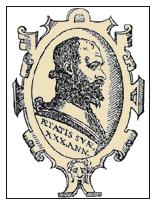
Don Jerónimo Sánchez de Carranza,, Jerónimo de Carranza, Portuguese: Hieronimo de Carança, 1539 (?), Sevilla, Kingdom of Savilla, The Kingdom of Castile and León 1600 (?) / 1608 (?)) – Sevillian nobleman, humanist, scientist, one of the most famous fencers, the creator of the Spanish school of fencing – Destreza. The author of the treatise on fencing "The Philosophy of Arms". Carranza created the ideal of a poet and a warrior, which became the main life guide of a nobleman.

The House of Guzmán is an old and noble Spanish family that emerged in Castile in the 12th century and became one of the most prominent dynasties of the Spanish kingdom until the 18th century. The original family gave rise to several branches, one of which became Dukes of Medina Sidonia from the 15th century to the 18th century, in turn giving rise to other branches including the Count-Dukes of Olivares.
















